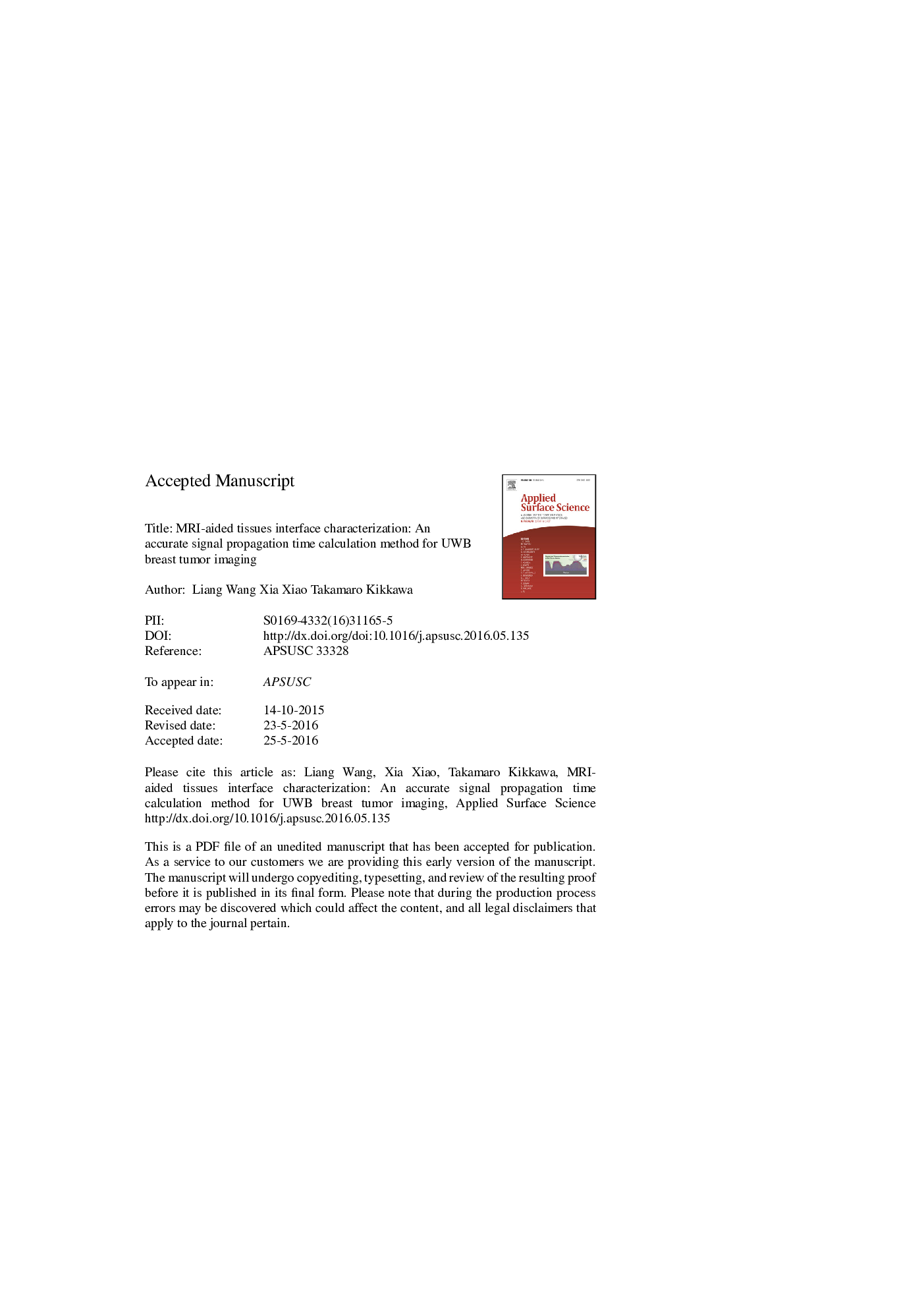| Article ID | Journal | Published Year | Pages | File Type |
|---|---|---|---|---|
| 5348503 | Applied Surface Science | 2016 | 28 Pages |
Abstract
Radar-based ultrawideband (UWB) microwave imaging is expected to be a safe, low-cost tool for breast cancer detection. However, since radar wave travels at different speeds in different tissues, propagation time is hard to be estimated in heterogeneous breast. Wrongly estimated propagation time leads to error of tumor location in resulting image, aka imaging error. In this paper, we develop a magnetic resonance imaging-aided (MRI-aided) propagation time calculation technique which is independent from radar imaging system but can help decrease the imaging error. The technique can eliminate the influence of the rough interface between fat layer and gland layer in breast and get relative accurate thicknesses of two layers. The propagation time in each layer is calculated and summed. The summed propagation time is used in Confocal imaging algorithm to increase the accuracy of resulting image. 25 patients' breast models with glands of varying size are classified into four categories for imaging simulation tests. Imaging accuracy in terms of tumor location along x-direction has been improved for 21 among 25 cases, as a result, overall around 50% improvement compared to conventional UWB imaging.
Related Topics
Physical Sciences and Engineering
Chemistry
Physical and Theoretical Chemistry
Authors
Liang Wang, Xia Xiao, Takamaro Kikkawa,
